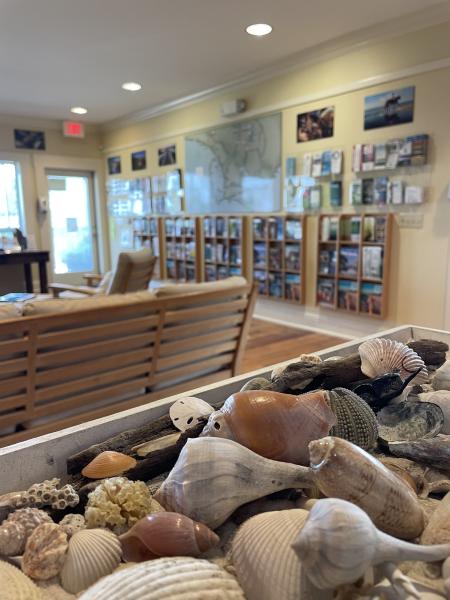Gulf County is home to some of Florida’s best shelling and beachcombing! You’ll find a trove of treasures on our bountiful shorelines. Shells, driftwoods, and other oddities are found here year-round. Beachcombing is influenced by the tides, sea life diet, and other natural factors. Have you ever gone out to the beach and didn’t think you saw much at the shoreline at first glance? Here are 5 great tips on how to fill your shell bucket!
Tip #1: The early sheller gets the shells
After you grab your cup of joe, head down to the beach to enjoy scooping up treasures from the morning tides. Most days in the early morning when it's calm and the tide is going out is often a great time to comb the shoreline. The shells tend to lap in and reveal themselves at the shoreline. The Gulfside beaches can change quickly, so be sure to walk the water’s edge first if the water is moving out. Bluewater Outriggers in Port St. Joe, has adjustable beach scoops called “Sand Dippers”. These poles have a strainer basket and are excellent for scooping up the shells at the water’s edge. Don’t forget to grab a mesh shelling bag, sunglasses, and a bottle of water while you’re there! The calmer water of St. Joe Beach is excellent for those morning shelling adventures. A great place to access the beach is Coral Beach Access. This access point has plenty of roadside parking and a Mobi-mat in place to make your walk a little easier.
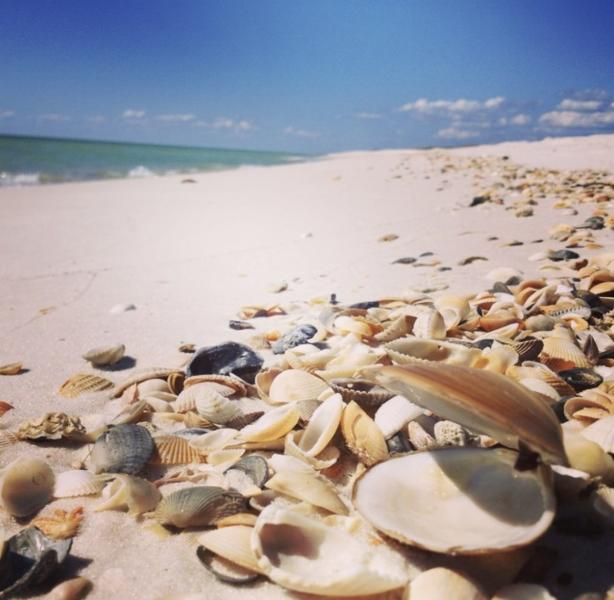
Tip #2: Gulfside, not bayside
St. Joseph Bay is full of many wonderful and interesting creatures. Most of the time if you find a shell in the Bay, it is already occupied by a small living creature. Did you know that Brittle Starfish, small fish, and all kinds of little critters use the empty shells in the bay as their home? That’s right! Empty shells in the Bay are “the housing market” for bay life. For these reasons, it is best to pick shells from the Gulfside. Although the Gulfside has a similar ecosystem, these shells are less likely to affect sea life as empty shells are more abundant on the Gulf. Remember when you pick up a shell, check to see if it is living first. You can simply put your ear to the shell to “hear the ocean”. But if what you hear sounds like bubbling Rice Crispies, there’s a hermit crab living inside. Make sure to put him back in the water, so he can live to see another day as he helps keep our bay clean. Sometimes the shell’s muscle is no longer alive but still inside. It can be tempting to take the shell, but remember that muscle is actually dinner to a variety of shorebirds. This is where and what they eat, so leave that shell behind and our feathered friends to their tasty snacks. You can learn more about our ecosystem and the St. Joseph Bay Aquatic Preserve at the St. Joseph Bay State Buffer Preserve Center. Stop in and learn more about how you can help conserve the bay. Just around the corner is Salinas Gulfside Park, which is a wide and abundant beach for shelling.


Tip #3: After a storm
After the storm passes by and it’s safe to play outside, remember to get down to the shoreline. Especially during the Summer storms that come from the South Atlantic Ocean. These storms are known to wash up some very unique things, including Mucuna Seeds, known as "Sea Beans", “Hamburger Beans” “Sea hearts”, and "Knicker Nuts". These unique buoyant seeds travel all the way from the tropical forests of both Africa and South America. What a long impressive journey to our shores! Sea Beans are strikingly different from anything you will find on the beaches and make great conversation keepsakes. From ones that look like marbles to even tiny little hamburgers, you can’t miss these shoreline oddities. Many people and cultures make handmade jewelry from them, including Catholic Rosaries. Sea beans are felt by many to be soothing and serve as great pocket fidget items. Bring them out to a beach yoga session for added relaxation. You may stretch over and find one while you’re there! Beaches with full open Gulf frontage are always the best place to find these. A prime location to search for these beauties is by visiting T.H Stone Memorial St. Joseph Peninsula State Park.
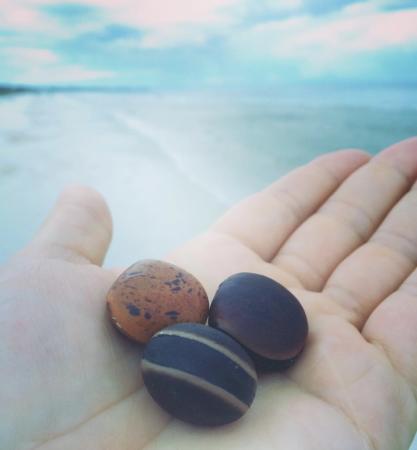
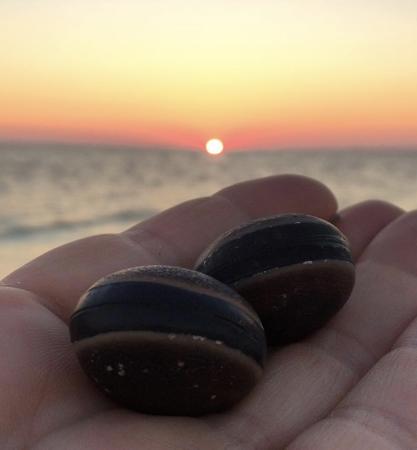
Tip #4: Twice is nice
They say, as far you walk one way, you still have to walk back the same distance. That’s not a problem for our multi-tideline beaches. Indian Pass has some of the best and Seminole Street Beach Access will get you there. When you’re strolling the beach for shells, most of us go to the shoreline first. But don’t forget, there are other tidelines on the dry sand areas of the beach to find treasures on. The high tideline sand is soft and powdery allowing the wind to slowly reveal shells covered by sand. Did you know walking in soft sand is actually good for you? That’s right, softer sand is easier on your bones and joints than wet, packed sand, as it's more buoyant. Softer sand will also help build more resistance and strength in your body. But note that if you have lower body injuries, it may be best to walk on firmer sand. If walking on the soft sand doesn't work for you, no worries. The shoreline edge is also going to change by the time you turn around, so keep looking even if you’ve already walked by. You can also stop in Daly’s Watersports for supportive footwear brands to get you on your adventure!
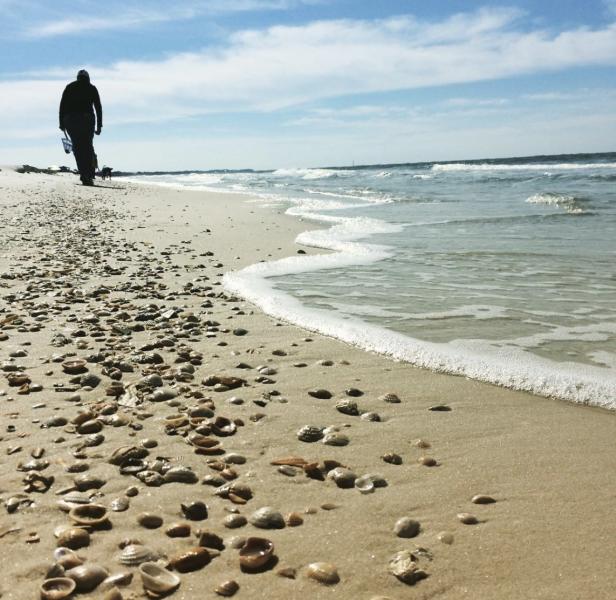
Tip #5: Get the Guides!
Stop by the Gulf County Welcome Center to get a free copy of our shell guide with a beachcombing hotspot map. Come visit with me, Concierge Crystal, for more tips and updates. Like what may be washing up while you are here. Ask questions about shells, beachcombing, and so much more! I’ll even tell you and what you can do with your empty shells. As you walk about the Welcome Center, check out our shell displays. If you are visiting Gulf County for the winter, you don’t want to miss signing up for our annual Guided Shelling Trip and Craft.
